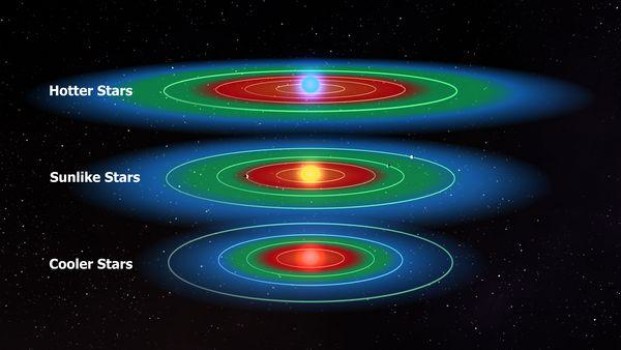
- Using NASA’s Kepler satellite, astronomers have found about 1,000 planets around stars in the Milky Way and they have also found about 3,000 other potential planets. Many of the stars have planetary systems with 2-6 planets, but the stars could very well have more planets than those observable with the Kepler satellite, which is best suited for finding large planets that orbit relatively close to their stars.
- Planets that orbit very close around a star are too scorching hot to have liquid water and life and planets that are far from the star would be too deep-frozen, but the intermediate habitable zone, where there is the potential for liquid water and life, is not a fixed distance. The habitable zone for a planetary system will be different from star to star, depending on how big and bright the star is.
- The researchers evaluated the number of planets in the habitable zone based on the extra planets that were added to the 151 planetary systems according to the Titius-Bode law. The result was 1-3 planets in the habitable zone for each planetary system. If you then take the calculations further out into space, it would mean that just in our galaxy, the Milky Way, there could be billions of stars with planets in the hab